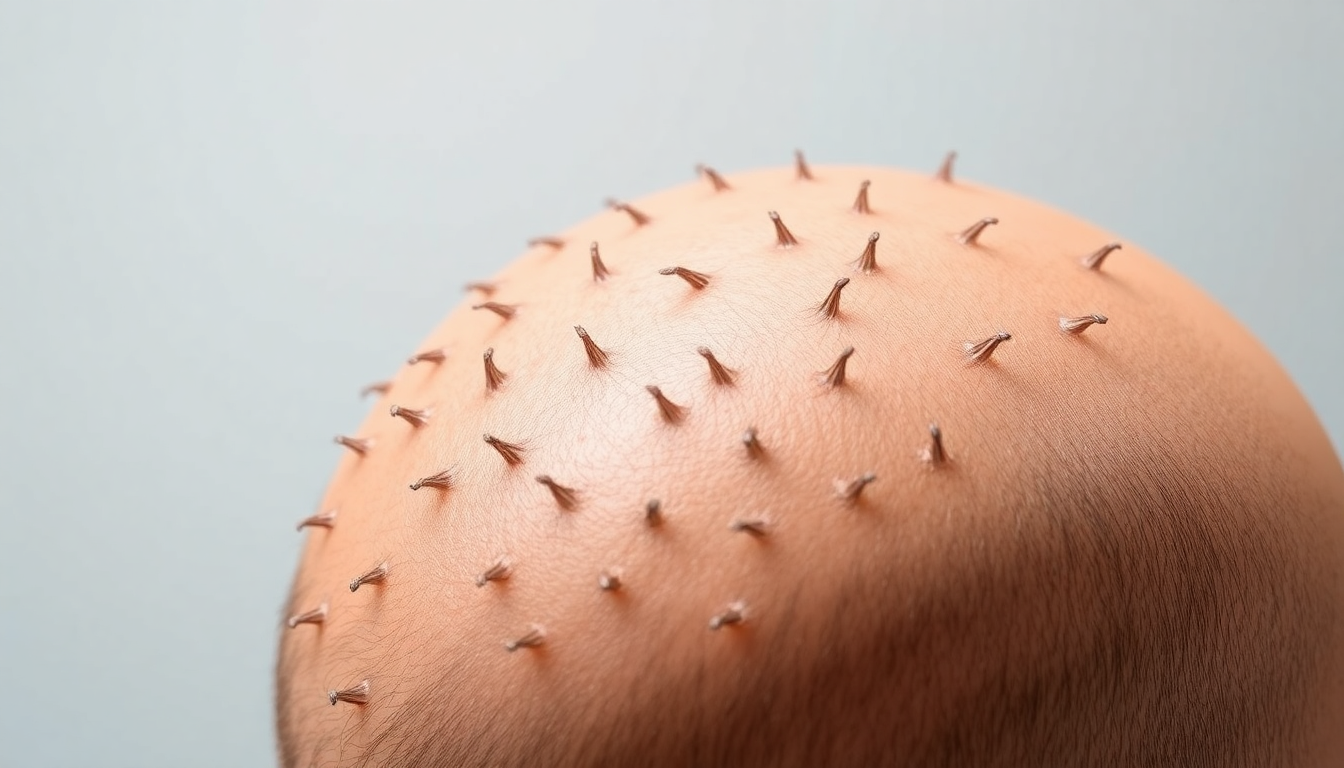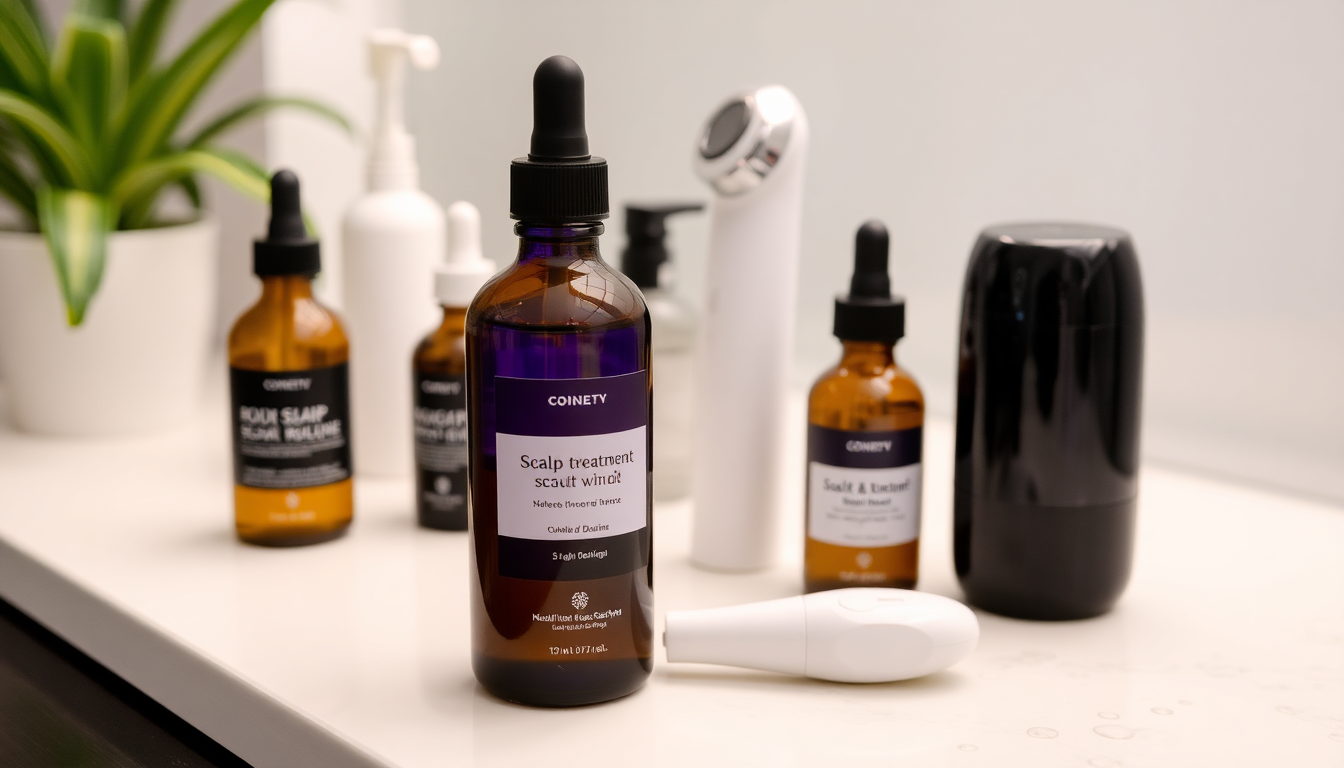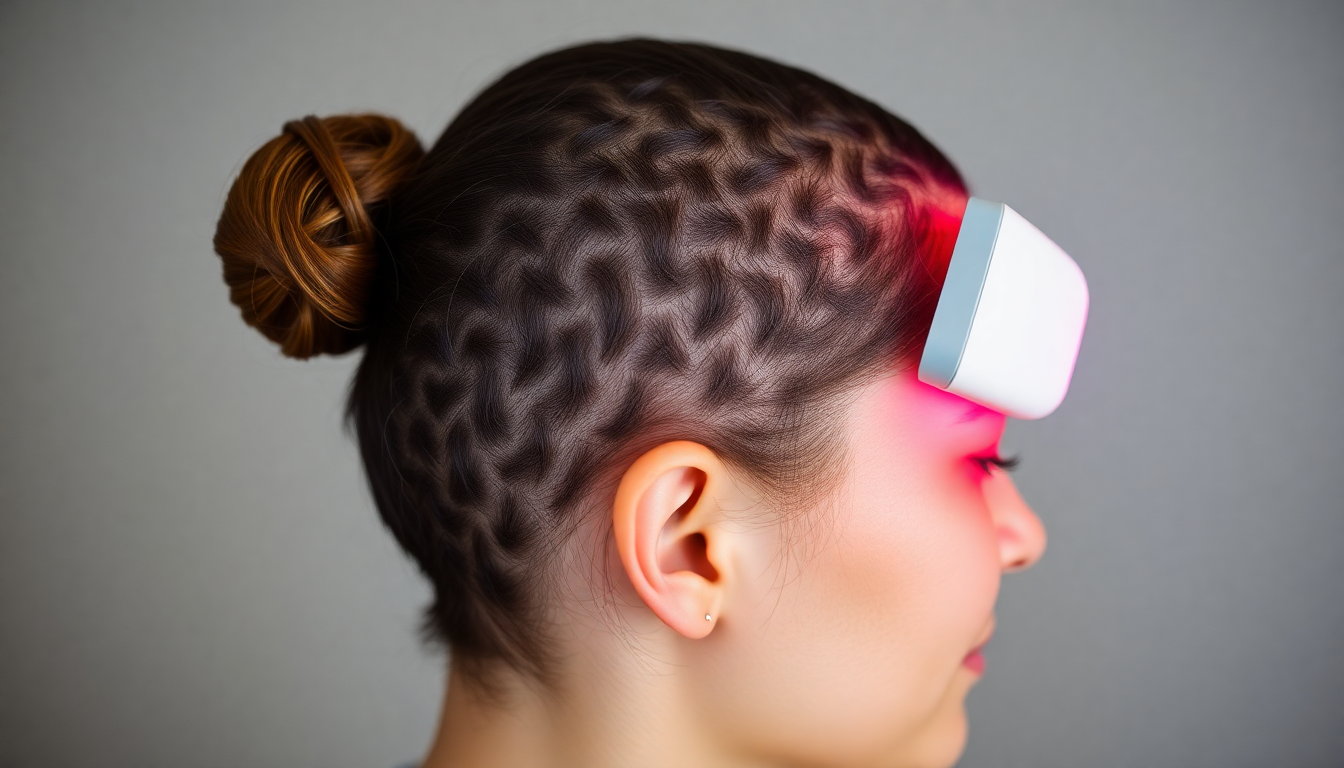Executive Summary — What You’ll Learn
This extended 6‑week scalp lab is a practical, evidence‑informed at‑home protocol to compare peptide serums, prebiotic scalp treatments, and at‑home devices. You’ll learn how each modality works, how to choose products, how to layer them to maximize benefit while minimizing irritation, and how to track results with reproducible metrics. The aim is clearer data after 6 weeks and a reliable plan to continue or refine treatments for longer‑term density improvements.
Why a Comparative 6‑Week Trial?
Most hair‑thickness improvements are gradual. A focused 6‑week trial is short enough to keep participants engaged and long enough to see early signals in scalp health, shedding patterns and visible strand fullness. The comparative approach — testing one product per category while keeping other variables steady — helps you identify which element yields the best benefit for your scalp and hair.
The Science in Plain English
Understanding the mechanisms helps you choose products wisely and avoid wasted money.
- Peptides: Short chains of amino acids that can signal cells in the follicle microenvironment. Copper peptides and certain palmitoyl peptides are popular for improving follicle health and increasing hair shaft thickness in some studies.
- Prebiotics & Scalp Microbiome: Prebiotics are food for beneficial microbes. A balanced scalp microbiome reduces inflammation and supports healthy hair cycles; prebiotic treatments can calm irritation and optimize skin barrier function.
- Devices: Low‑level laser therapy (LLLT) is thought to enhance cellular energy (ATP) and circulation. Microneedling causes controlled microinjuries that trigger repair pathways and may increase topical absorption. Sonic massagers mechanically improve blood flow and product distribution.
Selecting the Right Products — Detailed Criteria
Choose one product per class for the trial to reduce confounding variables. Use the checklist below when evaluating options.
-
Peptide Serum Checklist
- Active peptides named on the label (e.g., copper peptide, palmitoyl tetrapeptide).
- Transparent concentration information or third‑party lab data if available.
- Lightweight vehicle (water or glycerin base) rather than heavy oil.
- No unnecessary irritants: limit fragrance, menthol, or high alcohol content.
- pH compatible with scalp skin (roughly pH 4.5–6.5).
-
Prebiotic Scalp Treatment Checklist
- Prebiotic ingredients such as inulin, fructooligosaccharides (FOS), fermented extracts.
- Anti‑inflammatory humectants like panthenol or beta‑glucan for scalp comfort.
- Prefer leave‑on formats so microbiome gets continuous support.
-
Device Checklist
- For LLLT: look for devices with published wavelengths (630–670 nm or 800–900 nm ranges) and recommended treatment durations.
- For microneedling: choose needle lengths appropriate for at‑home use (0.25–0.5 mm for scalp) and a reputable brand with clear hygiene guidance.
- For massagers: look for variable intensity and ergonomic heads that reach the scalp comfortably.
For convenience and trusted product options to begin your lab, consider browsing Eelhoe’s curated range of peptide serums and prebiotic scalp treatments: Eelhoe peptide serums and Eelhoe prebiotic scalp treatments.
Layering Rules — How to Stack Safely and Effectively
Proper layering prevents active ingredients from neutralizing each other and reduces irritation risk.
- Apply thinnest-to-thickest: water-based prebiotic leave-on → peptide serum → oil or thicker sealant (if you use one).
- Allow 1–5 minutes between layers for absorption. Do simple fingertip patting rather than rubbing vigorously.
- If using a device after topical application, check manufacturer guidance. Sonic massagers usually work well after serums; LLLT helmets are fine after application. Microneedling should generally be done before applying serums to enhance penetration (once weekly max for at‑home lengths), but avoid applying irritating actives same day.
- Avoid combining potent exfoliants (AHAs/BHAs) or strong topical medications on microneedling days.
6‑Week Plan — A Comprehensive Day‑by‑Day Protocol
Below is a detailed schedule with variations for different devices.
-
Baseline (Day 0):
- Take standardized photos (top/crown, front hairline, both sides) using consistent lighting and camera distance.
- Record: existing products, shampoo schedule, shedding frequency, sensitive scalp triggers.
- Choose a 1 cm target area on the scalp to monitor regrowth/miniaturization with close‑up photos.
-
Weeks 1–2 (Establish & Tolerability Check):
- Nightly: gentle scalp cleanse 2–3× per week (or daily if needed) → apply prebiotic leave‑on where applicable → wait 2–3 minutes → apply peptide serum to targeted areas → if using a sonic massager, use for 2–5 minutes after application.
- Device schedule options:
- LLLT helmet: 15–25 minutes, 3×/week (or per device instructions).
- Microneedle roller (0.25–0.5 mm): once weekly; sanitize roller, perform short passes, then apply peptide serum only.
- Sonic massager: 2–5 minutes daily or every other day.
- Keep a daily log: itchiness, flaking, oiliness, shedding count (60‑second shower count), and perceived density (1–10).
-
Weeks 3–4 (Signal Detection):
- Continue routine. Compare photos week‑by‑week and note any early decrease in shedding or improved scalp comfort.
- If irritation occurs, scale back to every other night for peptides and pause microneedling for 2 weeks.
-
Weeks 5–6 (Evaluation & Decision Point):
- Repeat standardized photos and close‑up target area photos.
- Score results: perceived density, crown coverage, shedding reduction, and scalp comfort.
- Decide: continue, swap one product (e.g., different peptide), increase device frequency, or consult a dermatologist for next‑level options.
Tracking Template — What to Record Daily and Weekly
- Daily: product application (Y/N), device use (minutes), scalp sensations (0–3 scale for itch/irritation/oiliness), shedding count (optional), notes.
- Weekly: standardized photos, perceived density 1–10, commentary on texture and volume, any adverse reactions.
- End of Week 6: compiled photo comparison, average shedding change, final perceived density score, and next steps plan.
Case Study Examples (Hypothetical)
These fictionalized examples show how different people might respond after 6 weeks.
- Claire, 34 — Post‑partum shedding: After 6 weeks using a prebiotic leave‑on nightly and an LLLT cap 3×/week plus a peptide serum, Claire reports reduced shedding and thicker strand feel. Baseline vs Week 6 photos show improved coverage along the part line.
- Marco, 45 — Early male pattern thinning: Used a peptide serum nightly and microneedling weekly with a sonic massager daily. Shed count decreased slightly and crown photos indicate subtle increase in short regrowth. Marco continues regimen and considers adding physician‑directed treatments if plateau occurs.
- Nadia, 28 — Sensitive, flaky scalp: Prioritized a gentle prebiotic leave‑on and reduced device use to sonic massager only. Flaking and itch lowered significantly; perceived density improved due to less breakage and healthier strand appearance.
Advanced Layering Strategies & Variations
Once baseline tolerability is known, these variations can tailor the lab to specific needs.
- Boosting absorption: perform microneedling (0.25 mm) once weekly, then apply peptide serum immediately after to enhance penetration — avoid retinoids or strong exfoliants that day.
- Oily scalp strategy: use prebiotic leave‑ons and lightweight peptide serums; avoid thick oil seals; limit occlusive products to once weekly deep conditioning away from the scalp.
- Sensitive scalp strategy: start with prebiotic only for 2–3 weeks to calm irritation, then add peptides every other night.
Common Pitfalls & Troubleshooting
- Inconsistent photos or lighting: Use the same chair and window or a ring light for each photo to ensure comparability.
- Too many changes at once: Introducing new shampoos, supplements or medications during the 6‑week period confounds results. Keep non‑test variables stable.
- Irritation after mixing products: Stop all but the gentle cleanser and one product (preferably the prebiotic) until irritation resolves, then reintroduce others slowly.
- No visible improvement at 6 weeks: Many hair‑cycle effects take 3–6 months; evaluate early signals (less shedding, improved scalp comfort) and continue the most promising elements or consult a clinician.
Safety Considerations
- Patch test topicals for 48 hours before full scalp use.
- Microneedling carries infection risk if tools are not sanitized properly — follow hygiene instructions precisely.
- LLLT is generally safe but avoid if you have active scalp infections or are undergoing certain light‑sensitive treatments; consult your physician if unsure.
- If you are on systemic medications (e.g., chemotherapy, oral retinoids) or have autoimmune/scalp disorders, speak with your dermatologist before starting the scalp lab.
Cost, Time Investment, and Practical Tips
- Expect to spend modestly on a quality peptide serum and prebiotic leave‑on; devices have a wider cost range from affordable sonic massagers to higher‑cost LLLT helmets.
- Time: 5–10 minutes per evening for application + device time as required. Microneedling sessions take 10–20 minutes weekly including prep and aftercare.
- Buy sample or travel sizes where available to test tolerability before investing in full sizes.
SEO‑Friendly Keywords & How to Use Them in Your Blog
To help this content perform in search, use location‑specific and intent phrases, for example:
- 'peptide serums for hair density' — use in H1/H2 and early paragraph
- 'prebiotic scalp treatment benefits' — use in a benefits subsection
- 'LLLT hair device review' or 'at-home microneedling for hair' — use in device sections and comparisons
Link strategic anchor text to product pages you recommend. For convenient, curated purchases to start your trial, consider the Eelhoe collection for peptide serums and prebiotic solutions: Eelhoe hair growth products, Eelhoe peptide serums, and Eelhoe prebiotic scalp treatments.
Expanded FAQ
-
Q: Can I use minoxidil with this protocol?
A: Minoxidil is an effective medication for many users but is a separate intervention. If you plan to use minoxidil, consult your dermatologist about layering with serums and microneedling — some clinicians advise caution on timing to reduce irritation.
-
Q: How soon will I see thicker hair?
A: Some people notice reduced shedding and thicker strand feel within 6–12 weeks. Structural follicle changes often require 3–6 months or longer.
-
Q: Are there any interactions to avoid?
A: Avoid mixing aggressive chemical exfoliants or high‑strength acids with microneedling sessions. If you use prescription topical medications, check compatibility with new serums.
-
Q: Can I use oils with peptide serums?
A: Oils can seal in active ingredients but may weigh hair down. Apply oils sparingly and avoid direct application at the hairline if you are monitoring density there.
Longer‑Term Plan After Week 6
After your 6‑week evaluation, form a 3‑ to 6‑month plan based on results:
- Continue the most effective component(s) and consider spacing adjustments to optimize convenience and cost.
- If benefits plateau, switch to a different peptide or a higher‑quality device, or consult a dermatologist about prescription options.
- Keep a maintenance log and re‑photograph every 4–6 weeks to monitor progress.
Illustrations & Visual Documentation Tips
Good visuals make progress obvious. Capture these standardized shots each week:
- Top/crown: camera directly above head —
- Front hairline: straight on —
- Side profiles: left and right —
- Close up of target 1 cm area with ruler: use macro mode for consistency —
Where to Buy & Sponsor Links
To simplify getting started, shop a curated selection of serums, prebiotic treatments and compatible devices. Consider exploring Eelhoe for streamlined product options and beginner‑friendly kits: Eelhoe peptide serums, Eelhoe prebiotic scalp treatments, and related hair growth products that align with the layering strategies described above.
Final Words — Start Smart, Track Closely, Iterate
This expanded 6‑week scalp lab gives you a systematic way to compare peptide serums, prebiotic treatments and at‑home devices. Start with one product per category, follow the layering and hygiene rules, track consistently with photos and logs, and evaluate at week 6. If you need ready options to begin testing, Eelhoe offers peptide serums and prebiotic scalp treatments designed for layering and long‑term scalp care: shop Eelhoe.
Ready to begin? Pick your three baseline products, set aside a consistent photo spot, and commit to the daily log for 6 weeks. This is the simplest way to learn what truly helps YOUR scalp and hair — and to build a routine that supports noticeably denser hair over time.




Zostaw komentarz
Wszystkie komentarze są moderowane przed opublikowaniem.
Ta strona jest chroniona przez hCaptcha i obowiązują na niej Polityka prywatności i Warunki korzystania z usługi serwisu hCaptcha.